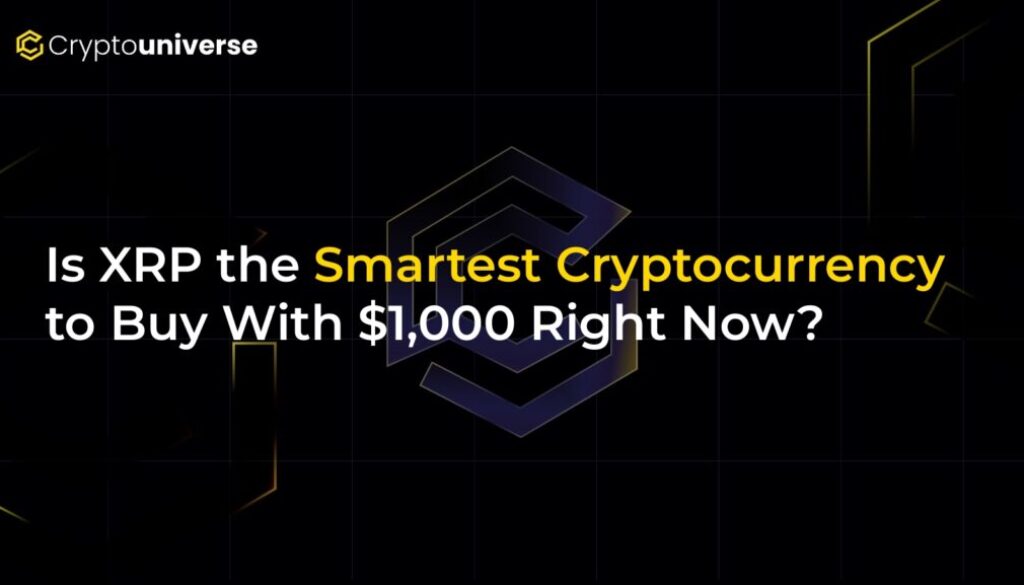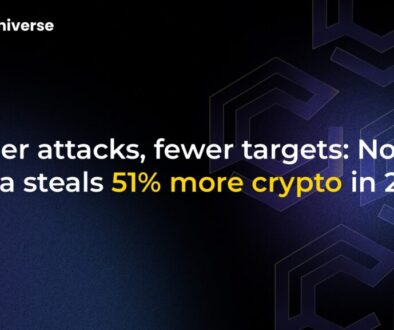Is XRP the Smartest Cryptocurrency to Buy With $1,000 Right Now?

With regulatory hurdles cleared and a clear mission, XRP is capturing the attention of investors. But is it the right move for your portfolio?
In the vast and often volatile world of cryptocurrency, investors are constantly searching for the next big opportunity. With thousands of digital assets to choose from, a common question arises: if you have $1,000 to invest, where should you put it? Recently, XRP has emerged as a top contender in this conversation, with many analysts and social media buzzing about its potential. But does the hype match the reality?
XRP isn’t just another cryptocurrency; it’s the digital asset powering the XRP Ledger (XRPL), a decentralized blockchain network built for enterprise-grade finance. Backed by the company Ripple, the vision for XRP is ambitious: to become the backbone for global payments, offering a faster, cheaper, and more reliable alternative to the legacy systems banks have used for decades. Let’s dive into whether this makes it the smartest crypto to buy today.
What is XRP and Why is it Different?
Think of the great gold rushes of history. While many sought their fortunes panning for gold, the real, consistent winners were often those who sold the shovels, pickaxes, and supplies. In the digital age, Ripple and XRP are positioning themselves as the providers of essential infrastructure for the financial world’s transition to blockchain technology.
The XRP Ledger is designed specifically to solve the pain points of cross-border payments. Here’s what makes it stand out:
- Speed: Transactions on the XRPL settle in just 3-5 seconds, a stark contrast to the days it can take for traditional international bank transfers to clear.
- Low Cost: The cost of a transaction on the network is a tiny fraction of a cent, making it incredibly efficient for moving value of any size.
- Scalability: The XRPL is built to handle a high volume of transactions, aiming for the capacity required by global financial institutions.
The Bull Case: Reasons to Be Optimistic About XRP
Several key factors are fueling the bullish sentiment around XRP, suggesting it could be a strategic addition to an investment portfolio.
1. Solving a Trillion-Dollar Problem
The current system for international payments, largely reliant on networks like SWIFT, is slow, expensive, and complex. XRP offers a streamlined solution, enabling near-instant settlement of funds across borders. As the financial world moves towards modern standards like ISO 20022 for financial messaging, XRP’s compatibility and efficiency make it a prime candidate for adoption.
2. Built for Banks and Institutions
Unlike many cryptocurrencies that operate in a regulatory gray area, the XRP Ledger was designed with compliance in mind. It includes features that regulated financial institutions require, such as the ability to manage asset issuance and enforce transfer rules. This focus on compliance makes it far more appealing to the conservative world of banking and finance.
3. Major Regulatory Clarity
For years, a lawsuit from the U.S. Securities and Exchange Commission (SEC) cast a long shadow over XRP, creating uncertainty and risk for investors. With that legal battle largely resolved in Ripple’s favor, a significant hurdle has been cleared. This regulatory clarity makes investing in XRP far less risky than it was before and has reopened the door for its adoption by U.S.-based institutions.
4. An Expanding and Practical Ecosystem
Ripple is continuously expanding the utility of the XRPL. The upcoming launch of a Ripple-backed stablecoin on the ledger will provide a stable asset for settlement and value storage, potentially attracting more institutional capital to the ecosystem. This, combined with other features, is creating a robust environment for real-world financial applications.
The Risks: What to Consider Before Investing
No investment is without risk, and it’s crucial to look at the other side of the coin.
Fierce Competition: XRP is not the only project aiming to revolutionize finance. Other blockchains and stablecoin networks are also competing for the same institutional business. Widespread adoption is not a guarantee.
Execution Risk: Ripple’s vision is grand, but its success hinges on convincing large, slow-moving financial institutions to overhaul their systems and adopt its technology. This is a monumental task that carries significant execution risk.
The Verdict: Should Your $1,000 Go to XRP?
So, is XRP the
If You’re New to Crypto: If you’re just starting and don’t own any other digital assets, Bitcoin (BTC) is arguably a better first choice. Bitcoin is the market leader and is primarily seen as a decentralized store of value, similar to digital gold. Its value isn’t tied to the success of a single company’s adoption strategy, making it a more conservative foundational asset for a crypto portfolio.
If You’re an Established Investor: If you already have a solid holding in Bitcoin and perhaps Ethereum, and you’re looking to diversify into a project with high growth potential, XRP presents a compelling case. An investment in XRP is a bet on the future of institutional finance on the blockchain. Its specific use case, regulatory clarity, and established partnerships make it a calculated, higher-risk, higher-reward play.
Final Thoughts
XRP has a clear, powerful vision to modernize global finance. With its legal troubles behind it and a technology built for its target market, the potential upside is undeniable. However, it operates in a competitive landscape where success is not guaranteed.
For an investor willing to take on that risk in pursuit of substantial growth, allocating a portion of their portfolio to XRP could be a very smart move. As always, it’s essential to do your own research and invest only what you are willing to lose.


